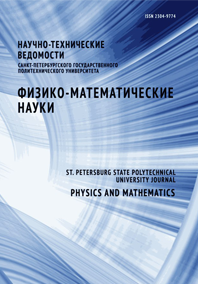The effect of crystallographic texture formation on the features of microstructure evolution in tensile-strained copper
The microstructural evolution of a commercially pure copper specimen deformed by uniaxial tension has been studied using electron backscatter diffraction (EBSD). In the specimen deformed up to fracture, some areas (in the neck) corresponding to various strain degrees were examined. This allowed us to study the microstructure obtained for strain degrees in the range from 0,45 to 1,15 on the single sample. A texture consisting of two components with prevailing orientations of [100] and [111] directions, parallel to the tensile axis, formed concurrently with the deformation microstructure. The grains of the [111] component were shown to retain rather uniform orientation at strain degrees of about 1. At the same time, the grains of the [100] component subdivided gradually into highly disoriented fragments. The obtained results were discussed in terms of polycrystalline material micromechanics.


